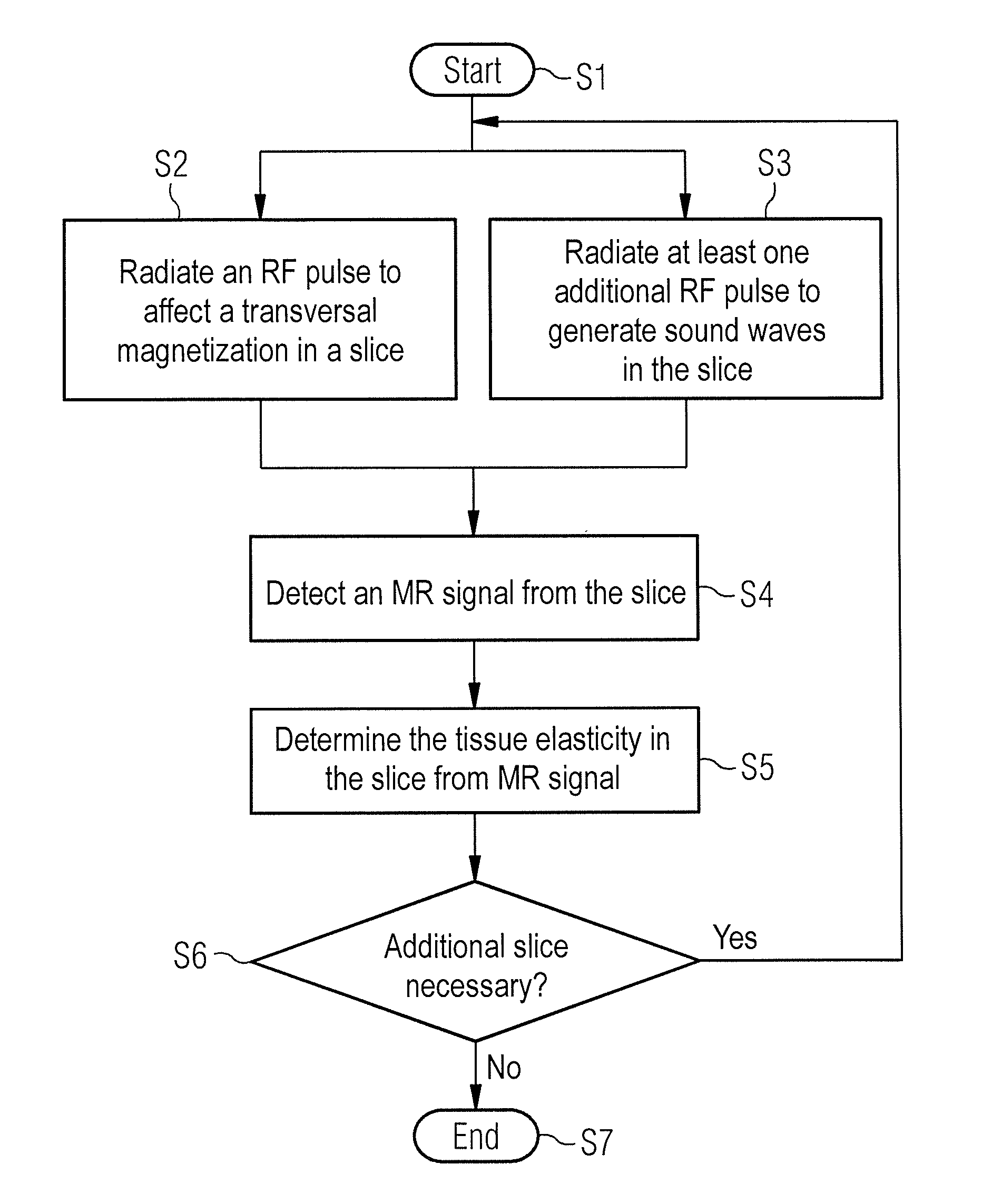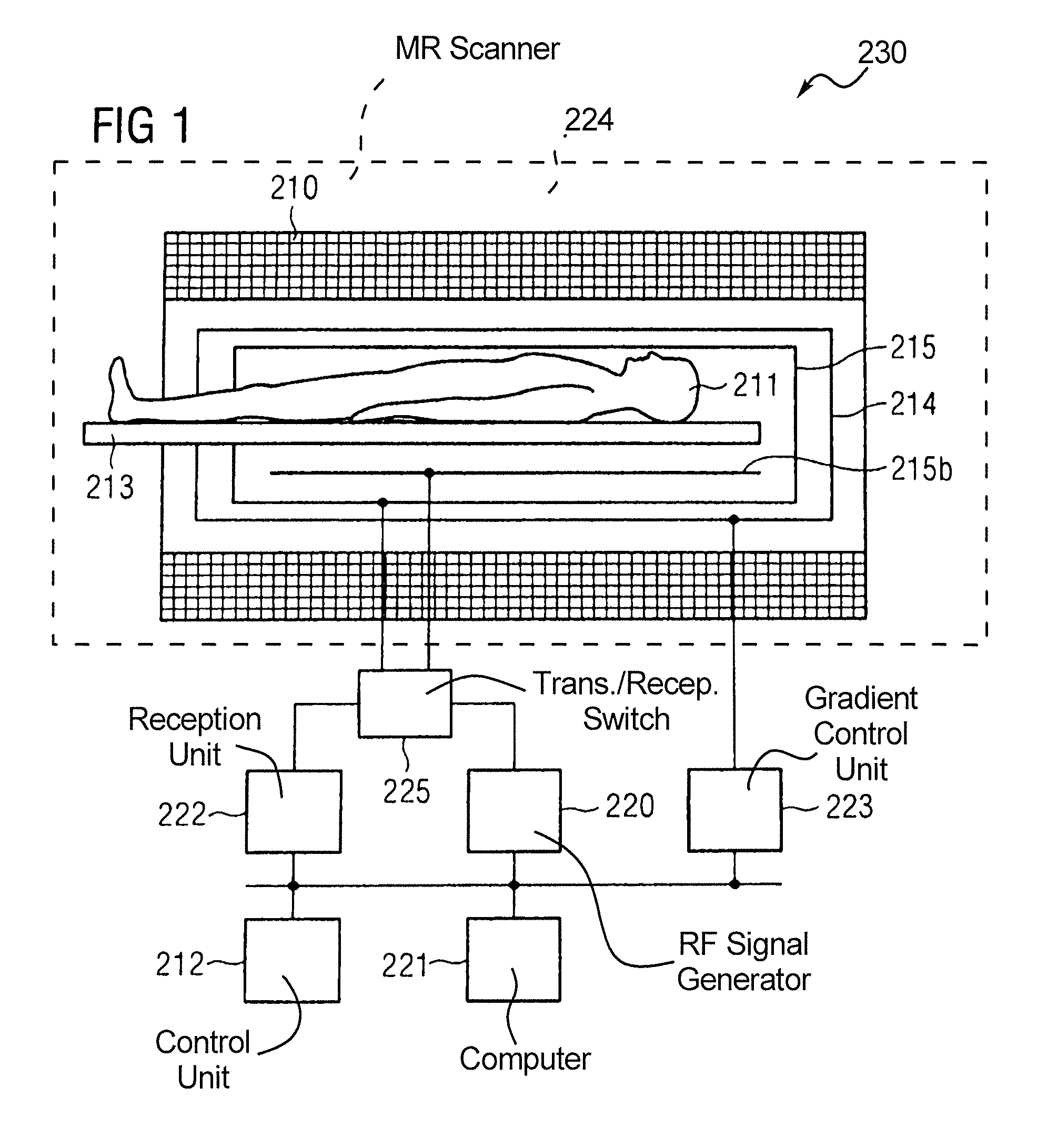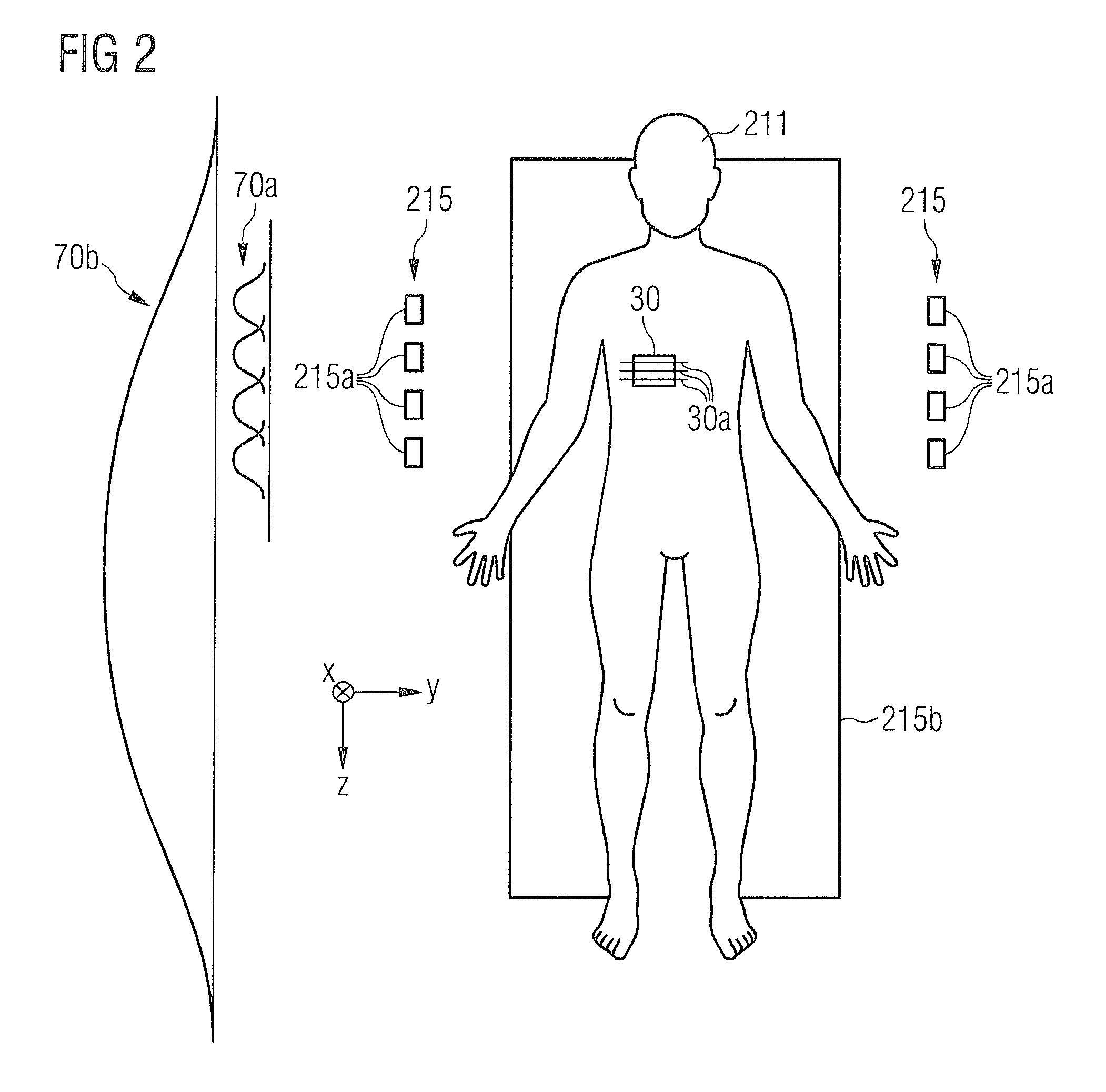Elastography method, and magnetic resonance system for implementing an elastography method
a magnetic resonance system and elastography technology, applied in the field of elastography and magnetic resonance systems, can solve the problems of high cost, high cost, and incompatibility of devices for generation with the environment, and achieve the effect of simple and cost-effective elastography and high precision
- Summary
- Abstract
- Description
- Claims
- Application Information
AI Technical Summary
Benefits of technology
Problems solved by technology
Method used
Image
Examples
Embodiment Construction
[0060]The present invention is explained in detail in the following using preferred embodiments with reference to the drawings. In the figures, identical reference characters designate identical or similar elements.
[0061]FIG. 1 schematically shows a magnetic resonance (MR) system 230 according to an embodiment of the present invention. The MR system 230 has a magnet 210 to generate a basic magnetic field. For example, the magnet 210 can be a tube magnet and the basic magnetic field can be situated parallel to the longitudinal axis of the tube. An examination subject—here an examined person 211—can be slid on a bed table 213 into the magnet 210. The MR system 230 furthermore has a gradient system 214 to generate magnetic field gradients that are used for imaging and for spatial coding of detected MR signals. The gradient system 214 typically comprises at least three separately controllable coils or coil sets that are operated by a gradient control unit 223 enable gradient fields to b...
PUM
 Login to View More
Login to View More Abstract
Description
Claims
Application Information
 Login to View More
Login to View More - R&D
- Intellectual Property
- Life Sciences
- Materials
- Tech Scout
- Unparalleled Data Quality
- Higher Quality Content
- 60% Fewer Hallucinations
Browse by: Latest US Patents, China's latest patents, Technical Efficacy Thesaurus, Application Domain, Technology Topic, Popular Technical Reports.
© 2025 PatSnap. All rights reserved.Legal|Privacy policy|Modern Slavery Act Transparency Statement|Sitemap|About US| Contact US: help@patsnap.com



